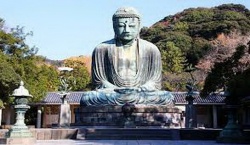Difference between revisions of "Divergent Concepts in the Sutras and Vinaya Texts"
(Created page with "thumb|250px| <poem> '''Divergent Concepts in the Sutras and Vinaya Texts''' [経律異相] (Chin Ching-ly-i-hsiang; Jpn Kyoritsu-iso ) An exp...") |
|||
| Line 9: | Line 9: | ||
[http://www.sgilibrary.org/search_dict.php www.sgilibrary.org] | [http://www.sgilibrary.org/search_dict.php www.sgilibrary.org] | ||
[[Category:Buddhist Terms]] | [[Category:Buddhist Terms]] | ||
| − | [[Category:Vinaya]] | + | [[Category:Vinaya Pitaka]] |
Revision as of 21:59, 2 June 2013
Divergent Concepts in the Sutras and Vinaya Texts
[経律異相] (Chin Ching-ly-i-hsiang; Jpn Kyoritsu-iso )
An explanation of Buddhist concepts written by Seng-min (467-527) at the command of Emperor Wu of the Liang dynasty in China and then revised and enlarged by Pao-ch'ang and other scholars. A Buddhist dictionary, this work was completed in 516 and consists of fifty volumes. It is divided broadly into twenty-one sections addressing themes such as heaven, earth, Buddhas, bodhisattvas, voice-hearers, laymen, laywomen, demons, and hells. For example, the section on "heaven" explains the twenty-eight heavens of the threefold world and includes related stories. The section on "earth" describes Mount Sumeru and the four continents surrounding it, as well as the mountains, rivers and seas, plants and trees, and the monasteries of Jambudvipa; it also introduces related stories. Thus, this work includes numerous stories from the sutras and vinaya texts (scriptures on the rules of monastic discipline). Moreover, because some of the quoted sutras are no longer extant, this work is regarded as a valuable reference for the study of Buddhism. It is generally said that Tales of Times Now Past and other collections of Buddhist stories compiled in Japan are based on this work and other similar works, rather than on the sutras themselves.
